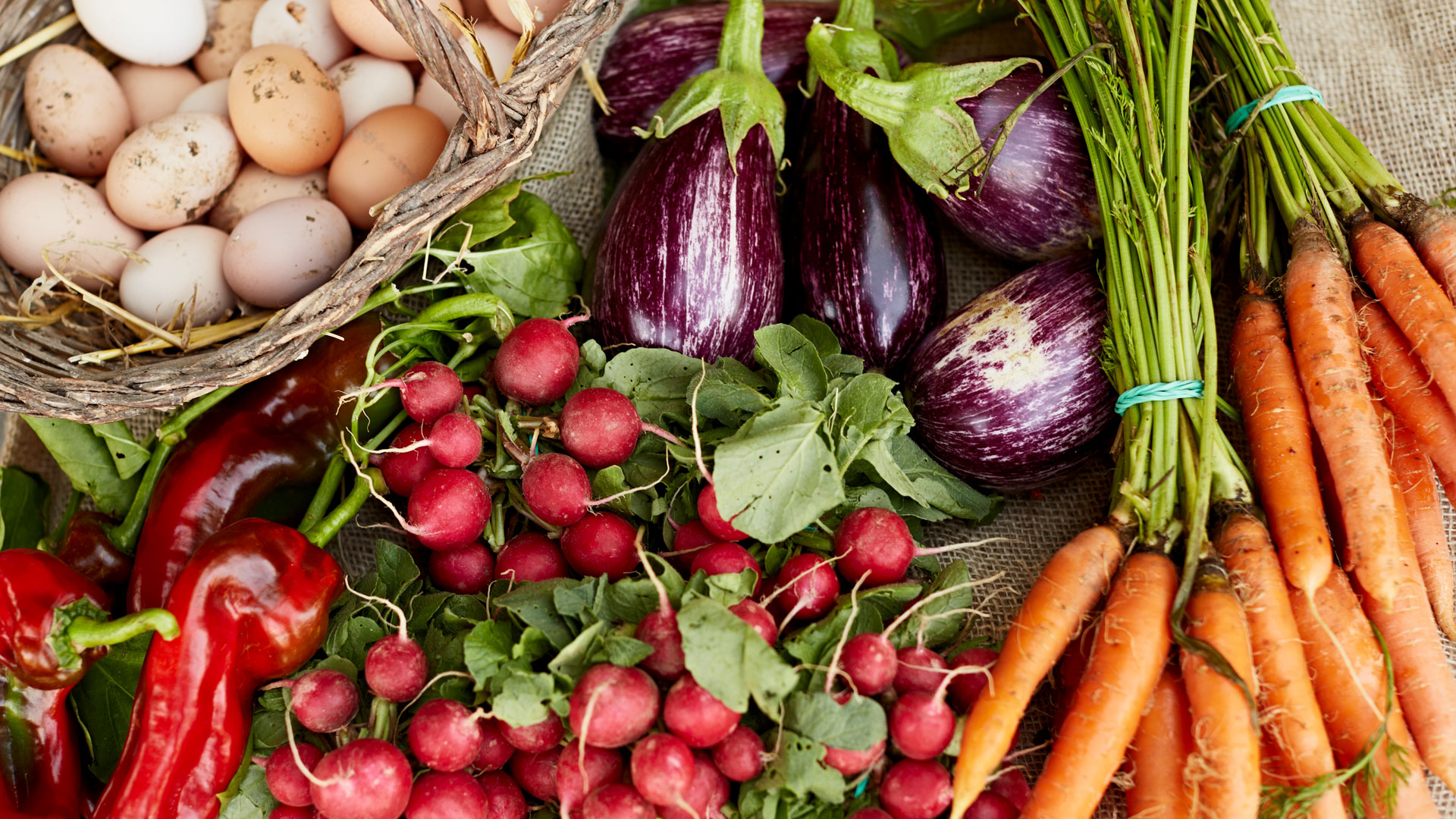Pegan diet food list: what you can and can’t eat
Looking for a Pegan diet food list? We’ve got you covered


If you’re keen to start a Pegan diet, you’ll need to start with a Pegan diet food list. Created in 2014 by functional medicine doctor Mark Hyman MD, the Pegan (paleo-vegan) diet is primarily plant-based. Dr. Hyman suggests making vegetables and fruits about 75% of your diet. You can still eat meat but think of it as a side dish instead of the main element in a meal. The Pegan diet focuses strongly on whole foods or foods that have undergone little to no processing before they make it to your plate.
We’ll get into what exactly you can eat on this diet in a moment and we’ll also find out whether it’s really that effective too. However, if you’re looking to change up how you eat to drop a few pounds, also take a look at the best exercise machines to lose weight to help create a calorie deficit.
What you need to know about the Pegan diet
Certified health coach Michelle Flynn, who studied under Dr. Hyman, says, “Pegan, or Paleo-vegan, is a way of eating that blends the principles of the paleo and vegan diets, combining the best of both ways of eating.”
“Paleo is based on whole foods that would have originally been hunted or gathered, such as meats, vegetables, fruits, and nuts. The vegan diet involves eating plant-based foods and avoiding all animal products. The Pegan diet consists of approximately 75% plant-based foods and 25% animal products. In addition, the Pegan diet focuses on fresh foods that are produced, limits processed foods, and excludes dairy and gluten.
Pegan diet food list

The Pegan diet is unrestricted because it does not offer recommendations on how much to eat in a day or what portion sizes to choose. Instead, the focus is on unprocessed foods, so you may find yourself cooking more than you would if you were relying on convenience food and snacks.
Foods to eat on the Pegan diet:
- Fruits and vegetables: Unlike paleo’s rules about which fruits or vegetables our ancestors may have eaten, Peganism isn’t as strict. All types of fruits and vegetables are allowed on the diet, although Dr. Hyman encourages choosing those with low glycemic load, like berries or watermelon, when possible.
- Grass-fed and/or sustainably raised meats: The Pegan diet emphasizes choosing meats like beef, chicken, and lamb that have been grass-fed, sustainably raised, and locally sourced. However, it’s important to note that meat makes up only a minority of the food you’ll eat. Dr. Hyman instructs Pegans to “eat meat as a side dish or condiment.”
- Nuts and seeds provide additional fiber, protein, and micronutrients to those following a Pegan diet. They’re also a source of healthy monounsaturated and omega-3 fats.
- Eggs: Eggs are another suitable protein for Pegans. They help provide vitamin B12, which may run low in a diet that limits meat.
- Fish: Though fish isn’t the star of a Pegan diet, it has its place in this eating plan. Dr. Hyman states that low-mercury fish like sardines, herring, and anchovies are acceptable choices.
Foods to avoid on a Pegan diet
- Dairy: There’s no dairy allowed on a Pegan diet, so no cheese, cow's milk, or ice cream.
- Grains: In line with the paleo philosophy, Peganism shuns almost all grains. That includes wheat, oats, barley, bulgur, and many others. Dr. Hyman theorizes that grains increase blood sugar and can cause inflammation—but some research dispels this. Therefore, limited consumption of certain low-glycemic grains, such as a half-cup serving of quinoa or black rice, is occasionally acceptable in the diet.
- Beans: You don’t have to swear off beans entirely on a Pegan diet, but Dr. Hyman urges caution with them, saying that their starch content can raise blood sugar. Up to one cup of beans (or, preferably, lentils) is permitted per day.
Does the Pegan diet work?

Michelle Flynn says, “One of the big benefits of the diet is the emphasis on eating a large number of fruit and vegetables which there is no doubt are nutrient-rich foods full of fiber, vitamins, minerals, antioxidants, and polyphenols. However, for some, the removal of legumes, whole grains, and dairy is a controversial move and can lead to deficiencies if the nutrients these food provide, are not replaced through other foods. Also buying organic fruit and vegetables and grass-fed meats may not be financially viable for many people.”
Start your week with achievable workout ideas, health tips and wellbeing advice in your inbox.
“My best advice would be if you are considering trying the Pegan diet then give it a go and see how you feel, if you feel better for it then fantastic! However, if you find it too restrictive then expanding to a whole food diet could be a very good option.”
Any diet will help you lose weight if you consistently burn more calories than you eat. The Pegan diet cuts out many high-calorie processed foods, which could introduce a calorie deficit. The key to dieting is in a healthy way. Some people can't fully restrict food groups. Sustainable weight loss comes with a healthy, realistic approach.
For more on changing up what you eat, find everything you need to know about the Mediterranean diet for weight loss.
Catherine is a freelance journalist writing across titles such as Verywell Health, Healthline, The Daily Telegraph, Refinery29, Elle, and Vogue. She specializes in content covering health, fitness, wellness, and culture.
A once reluctant runner, Catherine has competed in 30 running events in the past five years and looks forward to one day running the London Marathon.
